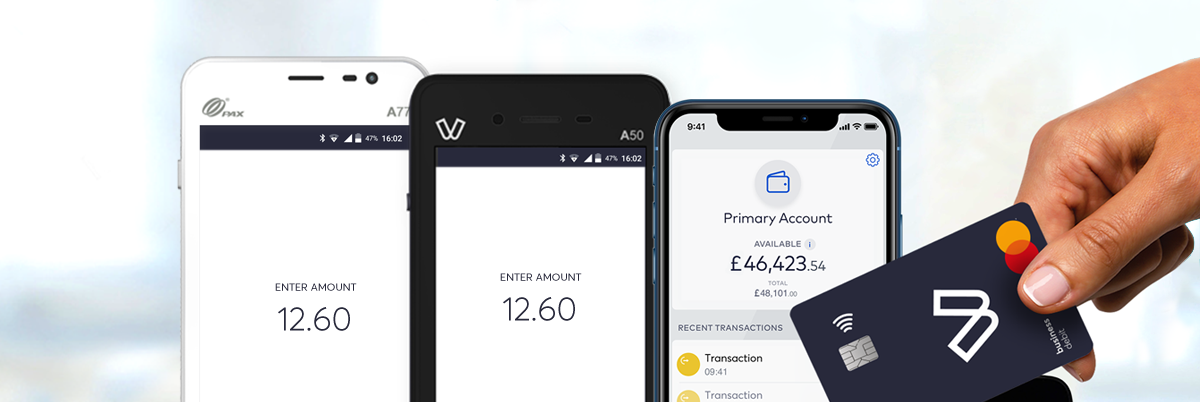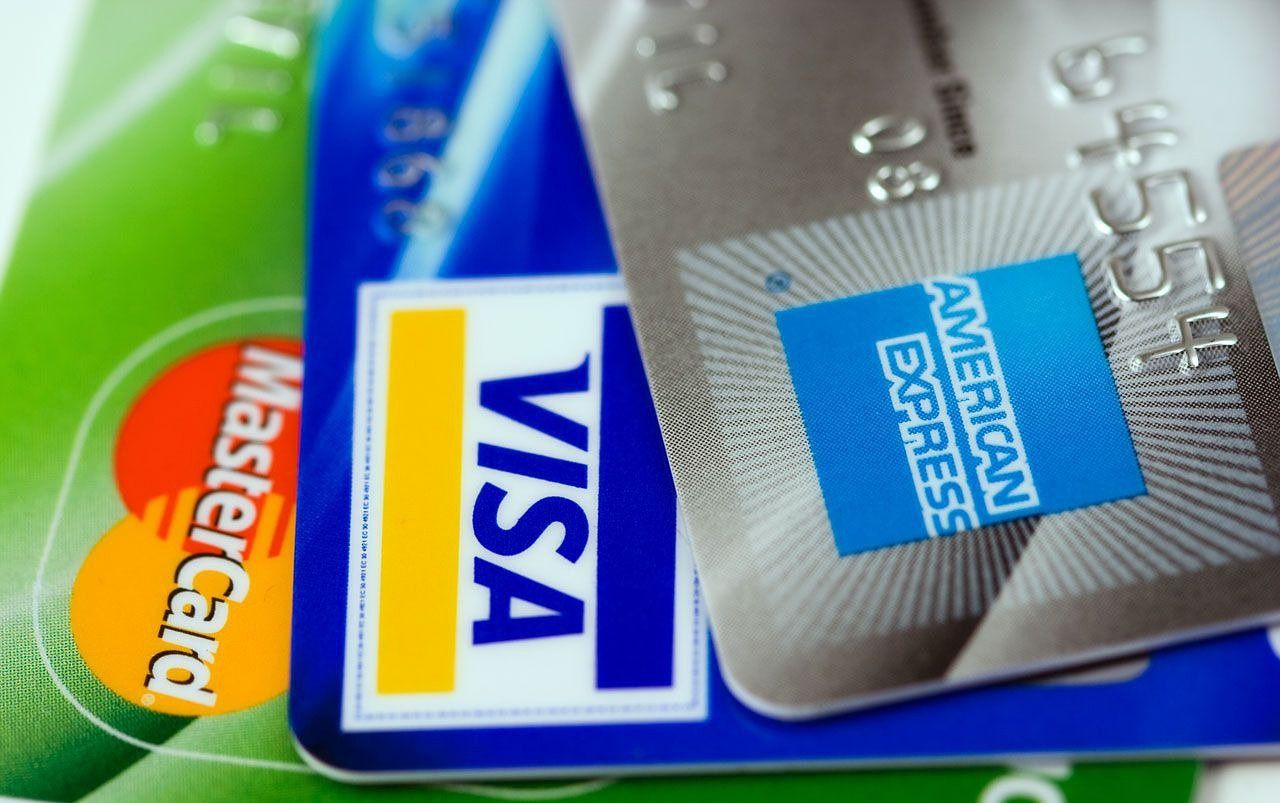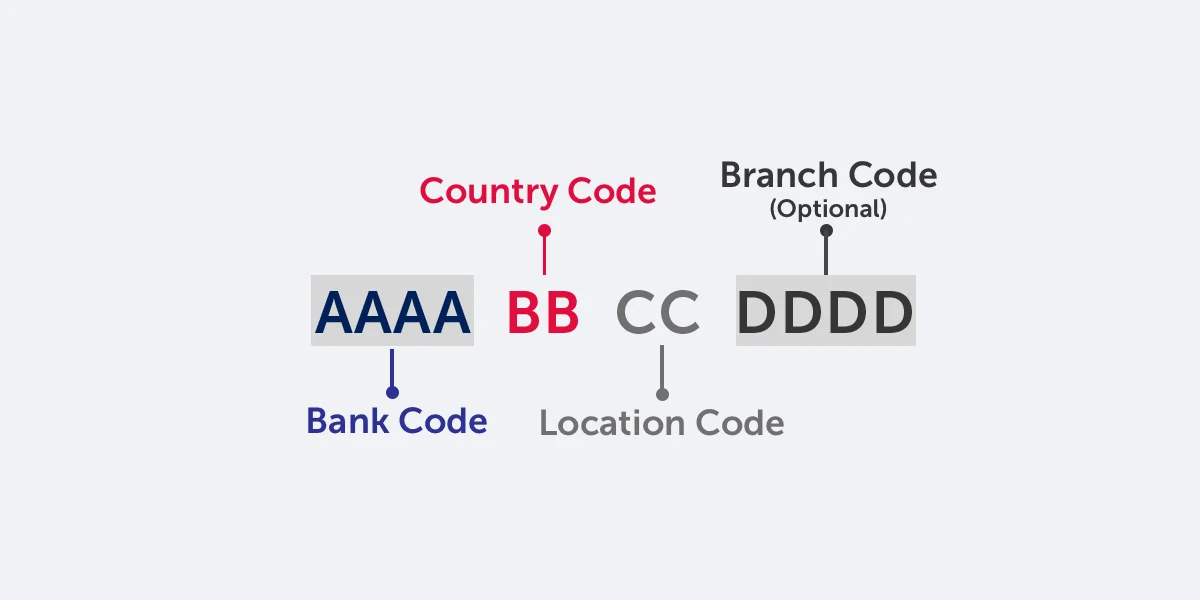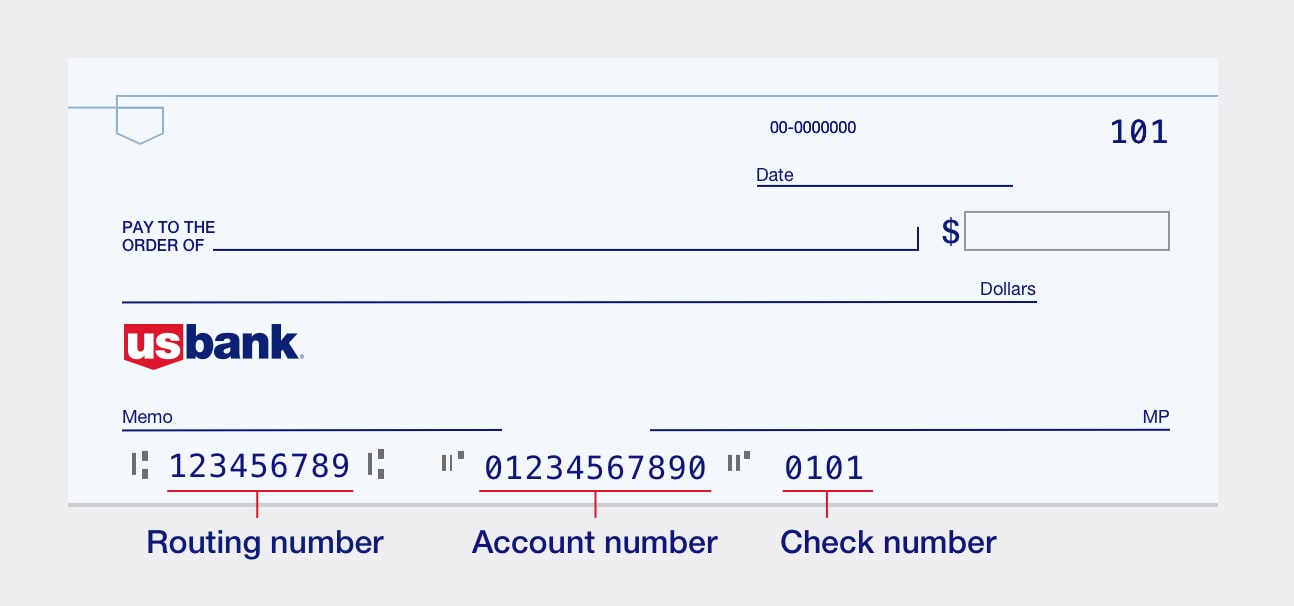Introduction
Welcome to the world of international banking! If you’ve ever made or received an international wire transfer, you may have come across a term called a Swift Code. In this digital era where money moves across borders with lightning speed, understanding the concept of a Swift Code is crucial for anyone involved in international transactions.
A Swift Code, also known as a Bank Identifier Code (BIC), is a unique 8 to 11 character code that identifies a specific bank or financial institution worldwide. It acts as a virtual address for banks, enabling them to communicate securely and accurately when transferring funds internationally. Think of it as a universal language that banks use to understand each other’s identity and location.
The Swift Code system was established by the Society for Worldwide Interbank Financial Telecommunication (SWIFT), a cooperative society founded in 1973. SWIFT’s primary objective is to provide a secure and standardized network for financial institutions to exchange information and perform financial transactions safely and efficiently.
Now, you might be wondering why a Swift Code is necessary when banks already have names and addresses. The answer lies in the global nature of banking. With millions of banks operating worldwide, each with its specific branch network, it can be challenging to ensure accurate and timely transfer of funds. That’s where the Swift Code comes into play.
By utilizing a Swift Code, banks can eliminate the confusion and possibility of errors that can occur when transferring funds across different systems. The code acts as a unique identifier, ensuring that the funds reach the intended institution and the correct branch within it. It allows for fast, secure, and efficient communication between banks, regardless of their location.
In the following sections, we’ll dive deeper into the purpose and functioning of a Swift Code, how to find it for your bank, and how it differs from other banking codes such as the International Bank Account Number (IBAN). So, let’s embark on this journey to unravel the mysteries of the banking Swift Code!
What is a Swift Code?
A Swift Code, also known as a Bank Identifier Code (BIC), is a unique alphanumeric code assigned to a specific bank or financial institution globally. It serves as a virtual address that enables banks to communicate securely and accurately when conducting international wire transfers.
The Swift Code consists of 8 to 11 characters, which are structured in a specific way to provide essential information about the bank’s location and identity. Each character within the code has a specific purpose, making it a powerful tool for identifying and verifying banks during financial transactions.
For example, let’s take the Swift Code “BOFAUS3NXXX.” In this code, “BOFA” represents the bank’s name, which is Bank of America. “US” indicates the country where the bank is located, which is the United States. The following “3N” represents the bank’s branch or location code, while the three trailing “X’s” serve as the bank’s optional branch code.
It’s important to note that the Swift Code is not only used for banks but also for other financial institutions, including credit unions and investment firms. It acts as a unique identifier, allowing these institutions to communicate seamlessly and accurately in the vast landscape of international banking.
Additionally, some banks may have multiple Swift Codes depending on the location of their branches or divisions. These codes will vary based on the country, city, or even specific branch within a city. Therefore, recognizing the correct Swift Code associated with the specific branch or division of your bank is crucial to ensure that your funds reach the intended destination without any issues.
In summary, a Swift Code is a unique identification code assigned to banks and financial institutions worldwide. It plays a vital role in enabling secure and efficient communication during international wire transfers, allowing banks to identify each other accurately and ensuring that funds are sent to the intended recipient.
Purpose of a Swift Code
The primary purpose of a Swift Code, or Bank Identifier Code (BIC), is to facilitate secure and efficient communication between financial institutions during international wire transfers. It serves as a standardized format that enables banks to identify each other accurately in the vast network of global banking.
Here are some of the key purposes of a Swift Code:
1. Unique Identification: A Swift Code acts as a unique identifier for banks and financial institutions. With millions of banks operating worldwide, each with its specific branch network, it can be challenging to ensure accurate and timely transfer of funds. The Swift Code eliminates confusion by providing a distinct alphanumeric code for each bank, making it easier to identify and communicate with the intended recipient.
2. Efficient Communication: By using a Swift Code, banks can exchange messages swiftly and securely. This is particularly important when it comes to international wire transfers, where timely and accurate communication between banks is crucial. The code ensures that the funds are routed to the correct destination and reaches the intended recipient without delays or errors.
3. Accuracy and Reliability: The structure of a Swift Code is designed to provide essential information about the bank’s location and identity. Each character within the code has a specific purpose, allowing for accurate verification of banks during financial transactions. This ensures that the funds are sent to the correct bank and branch within it, reducing the chances of errors or misrouting.
4. Global Standardization: The Swift Code system is internationally recognized and used by financial institutions across the globe. It provides a standardized format for identifying banks, regardless of their country of origin. This standardization promotes efficiency, transparency, and trust in the global banking system, making international transactions more accessible and secure for individuals and businesses alike.
5. Compatibility with Multiple Banking Systems: The Swift Code is compatible with various banking systems, making it easier for banks to communicate with each other worldwide. It allows for seamless integration and interoperability between different financial institutions, ensuring that funds can be transferred across borders and currencies with ease.
In summary, the main purpose of a Swift Code is to enable accurate and secure communication between banks and financial institutions during international wire transfers. It serves as a unique identifier and promotes efficiency, reliability, and standardization in the global banking system. Understanding the purpose of a Swift Code is essential for anyone involved in international transactions to ensure that funds are transferred smoothly and without complications.
How to Find Your Banking Swift Code?
Finding the Swift Code for your bank is relatively straightforward. Below are a few methods you can use to locate your banking Swift Code:
1. Bank Statements: Your Swift Code is often printed on your bank statements, particularly for international transactions. Check the header, footer, or any specific section of your statement that provides details about international transfers. The Swift Code should be clearly labeled and easily identifiable.
2. Bank’s Website: Most banks have their Swift Code listed on their official website. Visit your bank’s website and navigate to the “international” or “transfers” section. Here, you should find the Swift Code listed along with other relevant information for international transactions. If you’re unable to locate it, try searching for “Swift Code” or “BIC” in the website’s search bar.
3. Contact the Bank: If you’re unable to find the Swift Code through other methods, reach out to your bank’s customer service or contact center. Provide them with your account details and ask for the Swift Code associated with your specific branch or division. They should be able to provide you with the correct code promptly.
4. Online Swift Code Directories: There are several online directories available that provide comprehensive lists of Swift Codes for various banks worldwide. You can use these directories to search for your bank’s Swift Code by entering either the bank’s name or location. However, ensure that you are using a reliable and up-to-date directory to obtain accurate information.
5. Mobile Banking Apps: If you’re using a mobile banking app, check for a feature that provides international transfer information. Some apps include a “Find Swift Code” option, which allows you to search for your bank’s Swift Code directly within the app itself. This can be a convenient and quick way to locate the necessary information.
Remember that Swift Codes can vary depending on the specific branch of your bank. Therefore, it’s important to ensure that you have the correct Swift Code for your specific location to avoid any potential errors or delays in processing international transactions.
In summary, you can find your banking Swift Code by checking your bank statements, visiting your bank’s website, contacting your bank’s customer service, utilizing online Swift Code directories, or using mobile banking apps. Taking the time to locate the correct Swift Code ensures that your international wire transfers are processed accurately and efficiently.
Why Do You Need a Swift Code?
If you’re involved in international banking and conducting wire transfers across borders, having a Swift Code is essential. Here are some reasons why you need a Swift Code:
1. Identification of Banks: A Swift Code serves as a universal identifier for banks and financial institutions. It allows the sending bank to accurately identify the receiving bank during international wire transfers, ensuring that the funds are directed to the correct institution. Without a Swift Code, banks would struggle to communicate and verify each other’s identities, leading to potential errors and delays in transferring funds.
2. Ensuring Accurate Routing: When you initiate an international wire transfer, the Swift Code helps route the funds to the correct bank and specific branch within that bank. Each Swift Code is unique to a particular institution, providing precise information about its location. This ensures that the funds reach the intended recipient quickly and securely.
3. International Compliance: Financial institutions are required to comply with various international regulations and standard procedures. The use of Swift Codes ensures compliance with these regulations by providing a standardized format for identifying banks and facilitating secure communication during international transactions. Swift Codes help banks meet regulatory requirements and prevent fraudulent activities in the global banking system.
4. Secure Communications: International wire transfers involve sensitive financial information. Swift Codes enable encrypted and secure communication between banks, ensuring that the information exchanged remains confidential and protected from unauthorized access. This helps to maintain the integrity of the transaction and safeguard the financial interests of all parties involved.
5. Efficiency and Timeliness: The use of Swift Codes streamlines the international wire transfer process, making it more efficient and timely. Banks can communicate swiftly and accurately, reducing the time it takes to process transactions and minimizing the chances of errors or misrouting. This helps individuals and businesses execute international payments seamlessly, without unnecessary delays or complications.
6. Global Banking Connectivity: The global banking system relies on interconnectedness and seamless communication between financial institutions worldwide. Swift Codes facilitate this connectivity, enabling banks to conduct business and transfer funds across borders with ease. It promotes international trade and investment by ensuring smooth financial transactions between different countries and currencies.
In summary, having a Swift Code is crucial for international banking and wire transfers. It allows for accurate identification of banks, ensures proper routing of funds, promotes compliance with international regulations, enables secure communication, enhances efficiency, and contributes to the global connectivity of the banking system. Understanding the importance of a Swift Code helps individuals and businesses navigate international financial transactions successfully.
Understanding the Structure of a Swift Code
The structure of a Swift Code, also known as a Bank Identifier Code (BIC), follows a specific format that provides essential information about the bank or financial institution it represents. Understanding this structure is key to interpreting and utilizing Swift Codes effectively. Let’s break it down:
1. Bank Code: The first four characters of a Swift Code typically represent the bank code. This section identifies the bank or financial institution and is usually an abbreviation or acronym of the bank’s name. For example, “BOFA” represents Bank of America, while “HSBC” stands for Hongkong and Shanghai Banking Corporation.
2. Country Code: The following two characters indicate the country code, representing the country where the bank is located. This code follows the ISO 3166-1 alpha-2 standard, using two-letter country abbreviations. For example, “US” represents the United States, while “GB” denotes the United Kingdom.
3. Location Code: The next two characters provide information about the specific location of the bank, such as the city or region where its main office is situated. This code often helps differentiate banks with multiple branches within the same country. For instance, “NY” represents New York for a bank located in the United States.
4. Branch Code: Some Swift Codes may include an optional three-character branch code. This code further specifies a particular branch within a city or region. It distinguishes different departments or divisions of the bank. However, not all banks use this branch code structure, and the characters may be replaced with “XXX” if not applicable.
5. Check Digits: The last three characters of a Swift Code are check digits. They are used to ensure the accuracy of the code by performing a mathematical calculation based on the previous characters. These digits help detect errors or changes within the code, reducing the risk of misrouting funds during international transfers.
It’s important to note that the length of a Swift Code can vary. While most codes consist of 8 or 11 characters, some may be shorter or longer, depending on the specific requirements of the bank or financial institution. Additionally, banks may have multiple Swift Codes to designate different branches or departments, allowing for precise identification and routing of funds.
Understanding the structure of a Swift Code enables individuals and businesses to interpret the information encoded within it. This knowledge helps ensure accurate communication and seamless transfers between banks, promoting efficient and reliable international transactions.
In summary, a Swift Code comprises a bank code, country code, location code, optional branch code, and check digits. The structure provides crucial information about the bank or financial institution, including its name, location, and branch/division identification. Familiarizing yourself with the structure allows for effective utilization of Swift Codes in international banking and wire transfers.
How Does a Swift Code Work?
A Swift Code, or Bank Identifier Code (BIC), is a critical component in enabling secure and efficient communication between financial institutions during international wire transfers. Understanding how a Swift Code works can shed light on the intricacies of the process. Here’s a breakdown:
1. Initiating the Transfer: When you initiate an international wire transfer, your bank requires the recipient’s Swift Code to ensure accurate routing. You provide the beneficiary’s Swift Code along with their account details, which allows your bank to identify the recipient’s bank during the transaction. This ensures that the funds are sent to the correct bank and specific branch, avoiding any potential errors or misrouting.
2. Interbank Communication: Once the initiating bank has the recipient’s Swift Code, it establishes a secure connection with the recipient’s bank via the global network provided by the Society for Worldwide Interbank Financial Telecommunication (SWIFT). The Swift Code acts as a unique identifier for the recipient’s bank, allowing the initiating bank to communicate securely and directly with the recipient bank to conduct the transfer.
3. Message Exchange: The initiating bank sends a message to the recipient bank, including the necessary payment instructions and other relevant details. This message is sent using the SWIFT messaging system, which ensures encrypted and secure communication between the two banks. The Swift Code within the message helps the recipient bank validate the sender’s identity and process the transaction accurately.
4. Verification and Routing: Upon receiving the message, the recipient bank verifies the Swift Code to ensure the accuracy of the sender’s information. They cross-reference the Swift Code with their internal systems and the SWIFT network to confirm the sender’s authenticity and match the code with the correct account information. The recipient bank then routes the funds to the appropriate account based on the Swift Code and the provided payment instructions.
5. Transaction Completion: Once the recipient bank has confirmed the accuracy of the Swift Code and processed the transfer, the funds are credited to the beneficiary’s account. The entire process, from the initiation of the transfer to the final crediting of funds, is facilitated by the secure and standardized Swift Code system, ensuring transparency, accuracy, and efficiency throughout the transaction.
By utilizing a Swift Code, financial institutions can securely communicate and transfer funds internationally, ensuring that the correct banks and accounts are identified and that the transaction is completed accurately. The standardized format of the Swift Code system promotes interbank connectivity and compliance with international regulations, facilitating seamless financial transactions across the globe.
In summary, a Swift Code plays a crucial role in facilitating international wire transfers. It enables secure communication between banks, ensures accurate routing of funds, and validates the authenticity of the sender’s information. The Swift Code system, backed by the SWIFT network, enhances the efficiency and reliability of international transactions, providing a standardized and secure framework for global banking communication.
Differences between Swift Code and IBAN
The Swift Code and International Bank Account Number (IBAN) are both used in international banking, but they serve different purposes. Understanding the differences between these two codes can help clarify their roles in facilitating cross-border financial transactions. Let’s explore:
1. Purpose: The Swift Code’s primary purpose is to identify and verify the banks or financial institutions involved in international wire transfers. It acts as a virtual address, ensuring accurate communication and routing of funds. On the other hand, the IBAN focuses on identifying individual bank accounts within a specific country. It provides a standardized format for account numbers, making it easier to process domestic and international payments.
2. Structure: The structure of a Swift Code typically consists of 8 to 11 characters, combining bank and location codes. It provides information about the bank or financial institution itself. In contrast, the IBAN is a longer code, varying in length depending on the country. It incorporates the country code, checksum digits, bank code, and account number, providing specific details about the individual bank account.
3. Global vs. Local: The Swift Code has a global scope and is recognized and used by financial institutions worldwide. It enables banks to communicate and transfer funds internationally. Conversely, the IBAN is specific to individual countries or regions. Each country has its own format for the IBAN, and it is primarily used for domestic and intra-European Union (EU) transactions.
4. Usage: The Swift Code is utilized throughout the entire international wire transfer process. It is necessary for the initiating bank to identify the recipient’s bank and accurately route the funds. The Swift Code is also used for interbank communication and verification purposes. In contrast, the IBAN is predominantly used as an identifier for individual bank accounts, ensuring the accuracy of account details during domestic and EU transactions.
5. Flexible vs. Fixed Length: The Swift Code can vary in length, typically ranging from 8 to 11 characters. This flexibility allows for adaptability to different bank and branch structures. On the other hand, the IBAN has a fixed length for each country, ensuring consistency in account identification across institutions within a specific jurisdiction.
6. Requirement: While the Swift Code is essential for international wire transfers, the use of IBANs is mandatory for European countries within the Single Euro Payments Area (SEPA). European countries outside SEPA and other regions may also require the use of IBANs for domestic and international transactions.
In summary, the Swift Code and IBAN serve different purposes in the international banking landscape. The Swift Code identifies banks and facilitates secure communication during international wire transfers, while the IBAN focuses on identifying individual bank accounts within a country or region. Understanding the distinctions between these codes is crucial for accurate and efficient processing of both domestic and international financial transactions.
Swift Code FAQs
Here are some frequently asked questions about Swift Codes:
1. Are Swift Codes and BIC Codes the same thing?
Swift Code is often referred to as Bank Identifier Code (BIC). They are essentially the same thing and are used interchangeably.
2. Do I need a Swift Code for domestic transfers?
Swift Codes are primarily used for international wire transfers. For domestic transfers within your own country, you generally do not need to provide a Swift Code. Instead, you might need a different banking code or routing number specific to your country’s banking system.
3. Can I use the same Swift Code for all branches of the bank?
No, each branch of a bank may have a unique Swift Code. It is important to use the specific Swift Code associated with the branch or division of the bank that you are dealing with to ensure accurate routing of funds.
4. How long does it take for the funds to reach the recipient’s bank using a Swift Code?
The time it takes for funds to reach the recipient’s bank can vary depending on several factors, including the banks involved, the countries of origin and destination, and any intermediary banks. International wire transfers usually take a few business days, but it can be longer in certain cases.
5. What happens if I provide an incorrect or missing Swift Code?
Providing an incorrect or missing Swift Code can result in errors or delays in processing the wire transfer. The funds may be routed to the wrong bank or branch, leading to complications and potential difficulties in retrieving the funds. It is crucial to double-check and ensure the accuracy of the Swift Code before initiating a transfer.
6. Can I find the Swift Code online if I don’t have bank statements or access to the bank’s website?
Yes, there are several online directories available where you can search for a bank’s Swift Code. These directories provide comprehensive lists of Swift Codes for various banks worldwide. However, it is important to ensure that you are using a reliable and up-to-date directory to obtain accurate information.
7. Are Swift Codes confidential?
Swift Codes themselves are not confidential, as they are used for identification and communication between financial institutions. However, it is important to keep your personal banking information confidential and secure to prevent unauthorized access or fraudulent activities.
It’s always recommended to consult with your bank or financial institution directly for specific queries related to Swift Codes. They will be able to provide you with the most accurate and up-to-date information based on your individual needs and circumstances.
In summary, Swift Codes are primarily used for international wire transfers, each branch of a bank may have a unique Swift Code, and it is important to double-check the accuracy of the Swift Code before initiating a transfer. Online directories can be utilized to find Swift Codes, and it is advisable to keep personal banking information confidential and secure.
Conclusion
Understanding the concept of a Swift Code is crucial for anyone involved in international banking and wire transfers. The Swift Code, also known as a Bank Identifier Code (BIC), acts as a unique identifier for banks and financial institutions globally. It enables secure and efficient communication between banks, ensuring that funds are transferred accurately and swiftly.
A Swift Code serves several purposes, including identifying banks, ensuring accurate routing of funds, promoting compliance with international regulations, facilitating secure communication, and enhancing efficiency in the global banking system. By utilizing this standardized format, financial institutions can navigate the complexities of international transactions and maintain the integrity and security of financial transfers.
In addition to the Swift Code, it is important to distinguish it from other codes used in the banking industry. The International Bank Account Number (IBAN) focuses on identifying individual bank accounts within a particular country, while the Swift Code identifies and verifies the banks involved in the transfer.
To find your banking Swift Code, you can refer to your bank statements, visit your bank’s website, contact customer service, utilize online directories, or use mobile banking apps. Ensuring the accuracy of the Swift Code is crucial when initiating an international wire transfer, as incorrect information may result in delays or complications.
While the Swift Code system provides a strong foundation for international banking, it’s important to stay informed about any updates or changes in the banking and financial industry. Consulting with your bank or financial institution directly is always recommended for specific inquiries related to Swift Codes and international wire transfers.
In conclusion, the Swift Code plays a vital role in facilitating global banking operations and secure communication between financial institutions. Its standardized format ensures accuracy, efficiency, and compliance, making international wire transfers a seamless experience for individuals and businesses worldwide. With an understanding of the Swift Code, you can navigate the complexities of international banking with confidence and ensure secure and efficient international transactions.

























